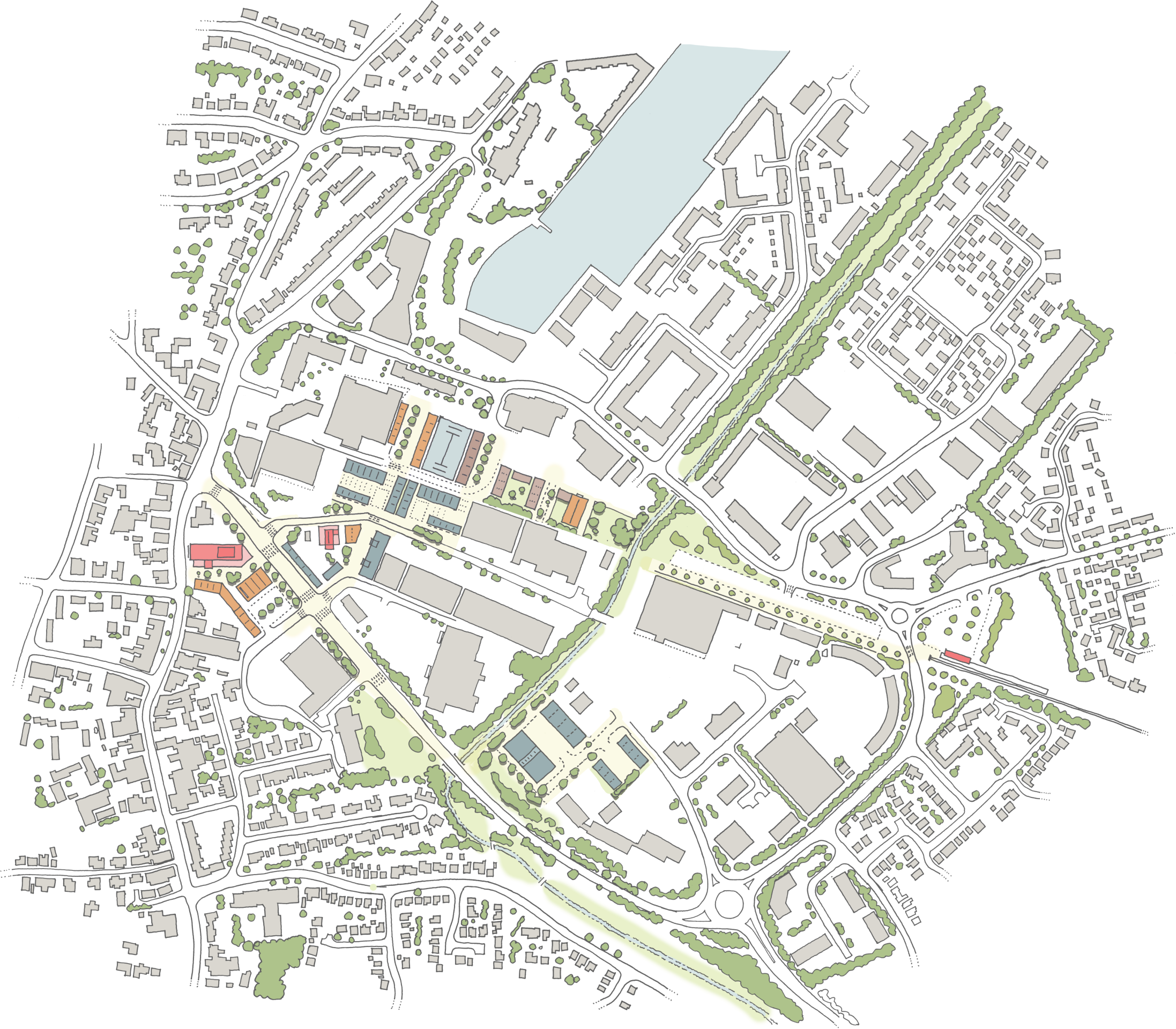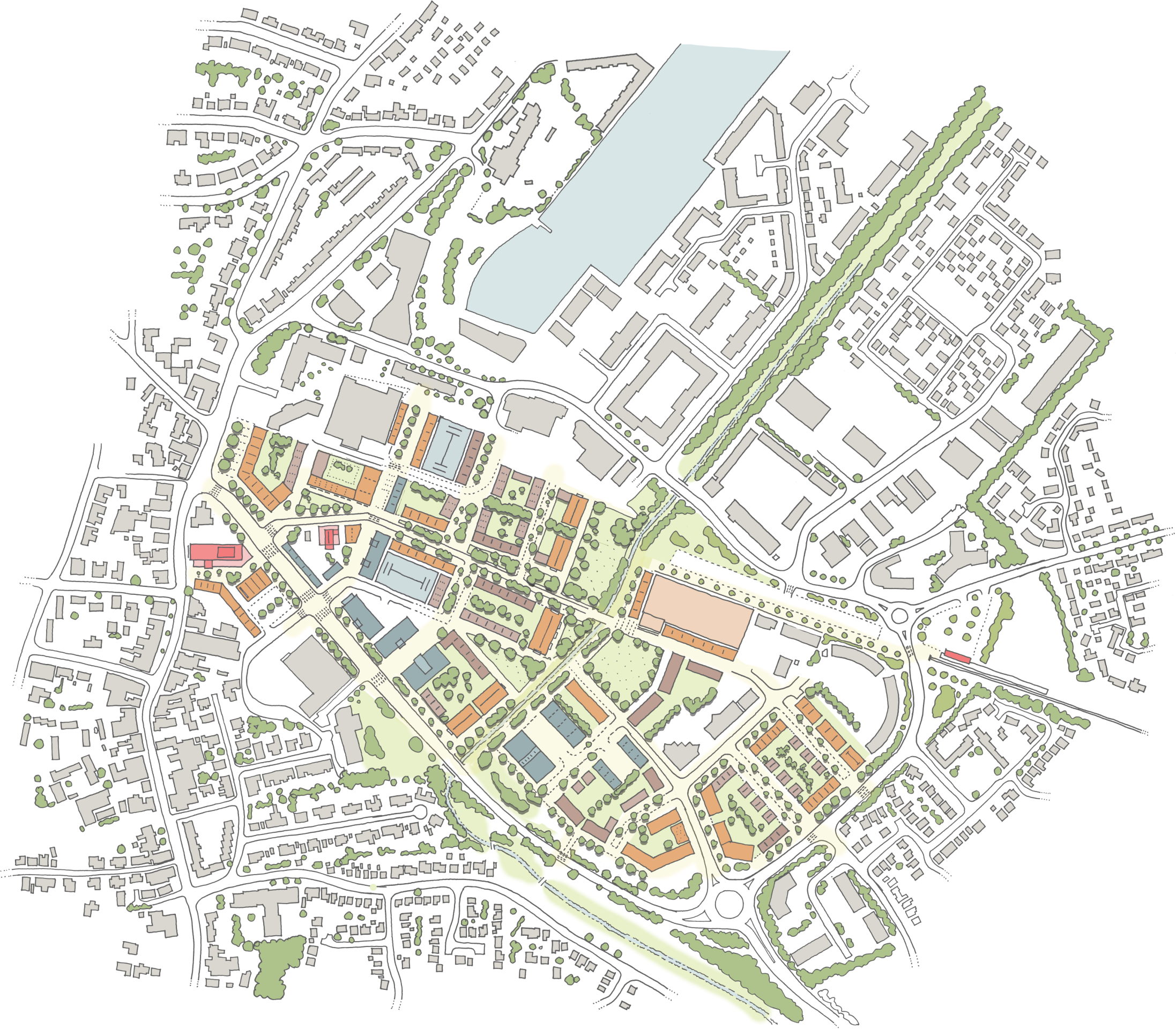This masterplan for central Portishead is designed to be flexible, allowing for changes in the economic and development context over a long period of time. There are lots of different land ownerships and it is hard to predict or dictate how change will happen. Some sites will come forward for development before others while some may remain in commercial use for the long term. The following section explores how change could happen, but there are many other ways in which development could be delivered.
This masterplan approach is important as it helps to form part of the evidence base for the Local Plan and supports decisions about the need for community infrastructure such as school places. This process includes understanding how quickly sites might be redeveloped, bearing in mind their current use - some are completely vacant, and others have long-standing businesses and tenants.
The plans capture a few key principles which will help to coordinate and unlock change:
- Enable independent delivery: The more that individual land owners can plan and deliver development by themselves, the easier it will be to deliver. However, the local planning authority will want to ensure that proposals do not blight neighbouring sites and that local infrastructure delivery (for example open space) is equitable and practical.
- Enable quick wins, not expedient solutions: Setting out a clear masterplan will be helpful in unlocking early projects, as people can see that they form part of a wider strategy. However, it is also important to make sure that the projects delivered to contribute to the wider vision for a connected place, rather than just being expedient.
- Minimises changes to infrastructure: Leaving roads, sub-stations and buried services in place as much as possible keeps costs down and make change easier for individual land owners. However, even gradual change and growth will require contributions to and investment in local infrastructure along the way.
Understanding growth
The illustrations below show our flexible vision for how the Wyndham Way area might develop over the next 15 years.
Short term - 0 to 5 years
Change in the short term is likely to be limited to available sites like Gordano Gate (as an industrial site) and some residential or mixed use development elsewhere in the study area, though no planning applications for development of any of the sites have been received. Opportunities for the Precinct and delivering different types of workspace on Old Mill Road could help to strengthen links from the High Street to the Marina. The delivery of the railway station and improved bus infrastructure could also materialise in the first five years.
Medium term - 5 to 10 years
In the medium term, we could see redevelopment of the Sainsbury’s site and parts of the Old Mill Road area to deliver a mix of uses including new homes, commercial and community space new green space, along with development at other sites.
Long term - 10 to 15 years
In the longer term we might expect that sites like the retail park and petrol station at the Cabstand junction are redeveloped for a mix of homes, commercial and community space, along with the Homebase site and other parcels of land down towards Quays Avenue.
This masterplan approach is important as it helps to form part of the evidence base for the Local Plan and supports decisions about the need for community infrastructure such as school places. This process includes understanding how quickly sites might be developed, bearing in mind their current use - some are completely vacant, and others have long-standing businesses and tenants.


